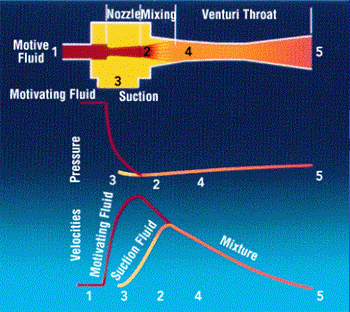
This vacuum is increased at different steps by regulating motive flow. After placing of the ladle/mold in the cooling chamber, degassing is performed, which ejects hydrogen, oxygen, nitrogen and other dissolved gases trapped within the mold, ensuring cleanliness, ductility and toughness of the steel. In steel industries, larger rejection due to voids and strength led to adaptation of ejector-aided vacuum cooling. The physics of vacuum generation and formation of recirculation bubbles on circumference of jets has been visually explained by Kumar et al. explains the influence of zero secondary flow on unsteady phenomenon in vacuum ejectors. There is zero secondary flow, while using ejectors as a vacuum pump.

They are used in vacuum packing, drying, evaporation, gas ejection, etc.

The fact of installation flexibility and efficient operation supports ejectors as a suitable alternative for vacuum generation.


 0 kommentar(er)
0 kommentar(er)
